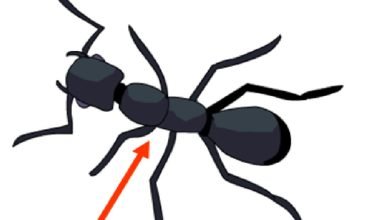How to Stop a Dog from Doing What He Shouldn’t Do
How to Stop a Dog from Doing What He Shouldn't Do

Discover the non-violent mode of education most used in the world to stop a dog from doing what is causing the problem: counter conditioning.
No longer wanting to “stop”… and wanting to “replace”
What do people do most of the time when their dog behaves in a way that is bothering them? They try to suppress the behavior.
You did it, I did it, and everyone has done it at least once in their life. It’s almost a reflex to try to stop unwanted behavior as it happens. For example, I pull on the leash when my dog pulls on the leash. We can all have reflexes to stop our dogs before it’s too late or avoid “scenes” and it’s not necessarily “unhealthy”.
When you operate this way, on a daily basis, you fall into a spiral.
Everything is there to make your dog fail and make you fail: the moment you intervene to stop the behavior, your dog is upset, overjoyed, frightened, overexcited… in short, he is acting under the influence of an emotion that he is unable to handle (this is very different from you and your own emotions).
This requires grumbling, bitching, yelling and/or using your physical strength, not necessarily to “violate” your dog, but to restrain him, etc.
For this method to work (yes, bullying a dog works well; that’s why it’s so popular), you have to go further and further… for example, pull harder and harder on the leash, yelling at the dog to be quiet when at first you didn’t raise your voice, starting to physically threaten him, grabbing his muzzle, etc.
You risk making your dog more and more frustrated and even aggressive… the annoying behavior gets worse, or it stops and you end up with other problems…
In any case, nothing is resolved and what you had chosen to have a dog for is deteriorating: the relationship between your animal and you.
What is counter conditioning?
Counter conditioning is the name of a mode of learning used for both animals and humans. Conditioning means learning and against means the opposite.
So much for the jargon, the most important being that this counter-conditioning technique actually makes you does the exact opposite of bullying and bullying.
You distinguish precisely what causes the problematic behavior of your dog.
You find a first situation where, this time, everything is in place for him to succeed; something will happen but it won’t trigger your dog and he will behave differently and certainly not the one you don’t want. He has a behavior other than the one that is annoying: you reward this behavior that is appropriate. So you’re not trying to stop a problematic behavior; you make sure that you can observe behavior that is not at all problematic.
For example, if the intercom is set to maximum volume and the hallway door is open, my dog will bark when the doorbell rings. If the intercom is set to minimum volume and the door to the hallway is closed, it does not bark when the doorbell rings. Even better (because she can make repressed mmmouf): the intercom is set to minimum volume + the hallway door is closed + my dog is lying on the bed = she doesn’t bark when the doorbell rings.
Instead of trying to silence her when the doorbell rings, I record the intercom ringtone with my tablet. I get on the bed with my dog. I ring the bell at the lowest possible volume. My dog raises her head without barking. I immediately give him a treat.
For a short week, I repeat the same thing, except that when she is very relaxed at a certain volume, I increase the volume a little. So for example, the first day, when she raises her head at the ringtone reproduced with the recording, I wait until she no longer raises her head at all to turn up the volume a little.
I base it on what she does.
I go further and further, not according to my own emotions (she barks a little, that annoys me a little, she barks a lot that annoys me a lot…) but according to the progress she can make
Benefits of using counter conditioning
The advantage of doing it this way is that you totally respect your dog. You are now aware that he is unable to control his emotions like you, so you have changed your point of view, which makes you change your methods.
Thus the relationship between your dog and you does not deteriorate; he is not afraid of you; you don’t feel guilty the day you realize you’ve gone too far or end up with a dog becoming aggressive.
And of course, you start to see that your dog is actually learning; he begins to learn a new behavior!
The pitfalls of counter conditioning
This mode of learning, which can be effective for almost any problematic behavior of all dogs, requires you to find ideal situations to do your repetitions. You have to prepare well, organize yourself, think ahead and show a lot of patience.
But the game is worth the candle. Widely!
It is essential that the annoying behavior no longer has the opportunity to occur until it has been replaced by the behavior that is appropriate, otherwise it is as if you had done nothing…
For example, if someone had rung the intercom and my dog had barked, before I got to the final stage (volume set to maximum, hallway door open, someone rang and my dog didn’t don’t bark), all my repetitions wouldn’t have been of much use.
Since it’s not an exact science and every dog is different, there may be times when the unwanted behavior occurs between sets of repetitions and your dog already has enough successes under his belt that the behavior shows up with less. Intensity; but beware, it still seriously calls into question your efforts.
In this article about dogs barking at people on the street, we talk about counter conditioning if you want to see a more detailed real-life example as well as the common risks of regression in this specific case.
What behaviors are we reinforcing?
Often you don’t know exactly what your dog is going to do. For example, I didn’t know that my dog would raise her head when she heard the sound of the intercom on the tablet, lying on the bed. But this behavior, raising the head, is not barking. So it’s good; I reward her (immediately).
She remained relaxed.
If she had gotten up, even without barking, she wouldn’t have been relaxed enough. I would have said nothing, done nothing and lowered the volume – in fact, I couldn’t have, it was already on the minimum setting!! I probably would have… put the tablet under a cushion to muffle the sound.
It is common for there to be several possible behaviors and you can also reward different behaviors, but not just any: all the behaviors that are not the one that poses the problem and that have the potential to bring you to the behavior that would be ideal.
However, it also happens that there is only one possible behavior that can be expected.
The difference between positive reinforcement and counter conditioning
You are probably familiar with positive reinforcement. I add a nice result to a behavior so I encourage that behavior to happen again.
Counter-conditioning also consists of encouraging a behavior (or several) because the dog understands that the result is pleasant, but the dog has already been conditioned.
He has already learned that in x and y circumstances, a behavior are rewarding – and alas, this behavior, you would have done without it. Check here for more details about Dogs at Family Pooch.
There is a learning to be done but “against” another learning already done, so to speak. And what the dog learned, more often than not, he learned without you. It is enough that he finds his interest in it. For example, growling at someone prevents that person from approaching, chasing after a cat fulfills the need felt by seeing the cat, etc.
And it is because there is already a problematic behavior that we will proceed very gradually since: We don’t want the annoying behavior to happen
We want the behavior(s) to be reinforced to occur
With a puppy that does not react to cats, I will reward him; yes, yes, I will reward him for doing nothing and thus make sure that he and I are on the same wavelength! If I give him a treat every time he stays down and relaxed when the cat walks past him, I’m applying positive reinforcement theory.
With an adult dog reactive to cats, this time I will have to find situations in which I will be able to reward behavior(s) that I consider appropriate, sociable, etc. To see him lying down and relaxed when the cat passes under his nose is now impossible.
It is my ideal and I will therefore begin a whole progression which will tend towards my ideal; I then apply the theory of counter conditioning.
Finally, working this way can be quick and easy, or long and complicated and we make mistakes or things get out of hand, so we regress a bit and then we start again… but that’s the most effective to date to modify a dog’s behavior without taking any risk of ruining everything.


![Photo of [streams]: Bridgewater/Emery/Ethan vs Parker Live free HS Football Score & REsults 09/09/2022](https://blogspinners.com/wp-content/uploads/2022/09/vxcbcxb-xcb-390x220.jpg)
![Photo of [streams]: Hanford vs Chiawana Live free HS Football Score & REsults 09/09/2022](https://blogspinners.com/wp-content/uploads/2022/09/080222-HEAT-HS-FOOTBALL-PRACTICE-QT-9P-PKG_00.00.12.16-1-390x220.webp)
